World of Warcraft, despite its flaws, dubious modern “casualization” design choices, and aging gameplay is still the flagship MMO in the market. Sure, the MMORPG genre as a whole has been going through a twilight decline for some time now, first knocked out by the MOBA boom and now swept away by the Battle Royale fad.
Announced in August 2015, Legion is the sixth expansion to the long standing game; it is now less than two weeks from being over. The pre-patch update for Battle for Azeroth is now live and the transitional period between the previous expansion and the next one is well underway.
Following the time travel shenanigans of Warlords of Draenor, the Alternate Universe Gul’Dan has traveled to the main timeline to finish up what his counterpart had failed to do, and boy, he sure mean business.
The Burning Legion is back, and they’re going all out this time. After the Alliance and Horde horribly failed to stop the Legion at the Broken Shore it’s up to you, the hero, to save the day once more. Build your Order Hall, wield your mighty artifact weapons and buckle up for a wild ride towards the Broken Isles in search for the Pillars of Creation as you fight against one of the biggest and longest lasting threats to the Azeroth and its denizens, culminating in one spectacular climax in the Seat of the Pantheon itself.
Right from the get-go, Legion was a broader and more ambitious expansion than its predecessor: Warlords of Draenor, which in my opinion was a decent but heavily flawed expansion in terms of content. Learning from their mistakes, Blizzard packed in a decent and respectable amount of solid content throughout Legion’s tenure, they fixed some of the haywire class homogenization that had started with Cataclysm, but at the same time tackled in copious amounts of (objectively mandatory) grinds alongside a heavy RNG system, both largely inspired by Diablo 3.
I didn’t played Legion from start to finish, but rather taking breaks here and there due to personal and family reasons which I’m sure some of you have been aware of—then again, taking breaks from an MMO game is expected—and outright mandatory if you want to keep your sanity, trust me on this one.
It was also the expansion that introduced a series of easy, legitimate, and comfortable (but time consuming) ways to convert gold into real world currencies, which led to my infamous “WoW Gold is now worth more than the Venezuelan Bolivar” tweet that spawned all those articles across the globe around a year ago.
So without further ado, let’s have a look at my personal opinion about Legion’s features, again, this is based on my personal and sometimes biased opinion; thankfully, I’m not a games journalist, also things may or may not make sense if you haven’t played WoW or aren’t familiarized with certain core MMORPG mechanics.
I’ll be skipping talking about PvP because I barely engaged on it during Legion, thus I don’t have that much of a basis to form a more concrete opinion about the state of it during the course of this expansion, I’m not gonna be like some of those Kotaku, Polygon or IGN peeps that review games that they don’t even bother to finish so no PvP talking.
Artifact Weapons
Artifacts Weapons were the defining feature throughout Legion; your journey through the expansion began and ended wielding these mighty and powerful weapons; you grew up in power alongside them, gained some interesting traits and abilities—ultimately sacrificing all of that power in order to save the world.
Each playable class had an artifact weapon for each of their specializations that you obtained through brief questlines at the start of your journey, some of these were emblematic and iconic weapons in Warcraft history such as the Doomhammer or the Ashbringer, while others were new additions to the lore; I was fond of the fact that some of them had certain unique peculiarities attached to them, such as the Shadow Priest one, who would occasionally whisper you naughty/woke things, adding some flavor to each spec, sometimes it’s just the little things that spice things up.
It certainly felt quite relaxing not having to worry about getting weapon upgrades throughout the expansion as up until Legion competing with other players for weapon drops was serious business, not to mention one of the primary sources of loot drama thorough the game ever since its launch in 2004.
Having different cosmetic variations of these Artifact Weapons was a great way to add a layer of customization in an environment where everyone was running around wielding the same “One of a kind” weapons.
Not all was fine and dandy with them though, the grind involved in empowering and unlocking your weapon’s traits often felt tedious and excruciating during the first months of the expansion; it sure lessened up as the expansion went on due to the inherent catch up nature of the system, but if for some reason you decided to switch classes or specs well, you had to start the grind all over, and if you were behind the grind you felt handicapped versus other people in your group, now add an alt or two to the mix and well, you had some real grinding in your hands mah boi.
There were numerous cases of high ranking guilds that spent their December 2016 holiday break farming the same dungeon over and over and over and over again in order to increase their weapon’s power and unlock their traits, talk about fun.
You also had to get the appropriate relics for your weapons which is where RNG often worked against you, but upgrading relics and the artifact’s power felt like a smoothish progression versus being stuck with a weapon for weeks until you finally got the upgrade you wanted so much.
While it was announced right from the start that these artifact weapons were an exclusive Legion thing, loosing them in the end feels as if you gained nothing from the expansion besides unlocking the cosmetic appearances for later use; sure, some of the traits and abilities these weapons gave to your characters have been baked in into the game in one way or another, but the majority of them are simply gone now.
Class Fantasy
Blizzard promised that Legion would feature the radical concept of “Class Fantasy”. The goal of it was to give each class some individuality and bring back some of their uniqueness and identity that had been lost through the years as a result of the out of control gameplay homogenization that was dialed to eleven from Cataclysm onwards; they wanted to make each spec feel unique on its own way, with more defined archetypes, both from an aesthetic and mechanical point of view.
As a result certain specs got radical overhauls, such as Survival Hunters being now melee based and Shadow Priests getting a more coherent thematic and a new gameplay mechanic attached, while others only required refinements in their tried and tested niches.
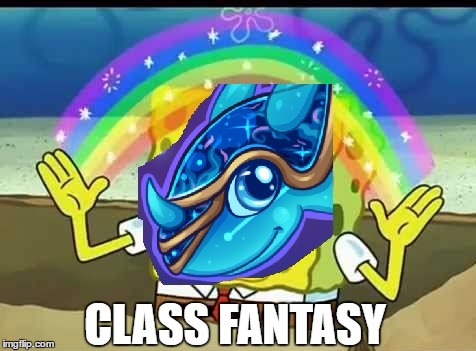
Did they accomplish this intended goal? Halfway if you ask me, the experiment was hit or miss for the most part.
Some of the class changes were great steps in the right direction, for example Discipline Priests, which went from being the “just spam shields lmao” extremely effective healer into one that is more focused on healing through doing damage via its atonement buff, which makes up for a unique and fun gameplay experience that I’ve been wanting to give a shot for some time now. Even Holy Priests, the healer whose niche is that they have no niche and are more of a jack of all trades healer was given new tools that made them exceptionally fun to play.
Other changes looked quite good on paper but were badly executed (looking at you, Shadow Priests), while others classes felt quite dumbed down when even more abilities got pruned from their toolkits, requiring specific talents to feel more “complete”; the removal of traditional group buffs like Power Word: Fortitude and Battle Shout was disappointing, I’m glad that some of them are returning in Battle for Azeroth, a raid without someone getting yelled for not buffing the group isn’t just the same.
My biggest personal disappointment with the Class Fantasy changes is Shadow Priests, which was my main spec from Mists of Pandaria up until early Legion.
Shadow has always been of a weird specialization that has gone through several iterations over the course of the years, a sort of rebellious cousin to affliction warlocks with iconic abilities such as Mind Flay and Shadow Word: Pain, their damage wasn’t always the best, but they would bring their own share of utility to compensate.
Blizzard decided to redesign the class using the Void and Insanity as a core unifying thematic, which goes more in line with the “fantasy” of Priests representing both the Light and Shadow, with Discipline acting as a balance between the two of them.
Voidform, Void Bolt, Void Torrent, tentacles that protrude from your body and from the ground that bore the Kurt Eichenwald seal of approval, it all sounded so good, but the fact that shadow’s damage output was now tied to a very slow ramp up voidform minigame, the lack of real AoE damage abilities, and that the slightest mistake could heavily affect your performance made it for a very unforgiving and hard to play caster. Why bother min-maxing to get optimal performance when you could just play a Mage or Warlock and perform better with substantially less effort, all while providing more utility to your groups than what shadow offered.
Most of Shadow’s early balance problems came from Surrender to Madness, which I think was a shot in the foot on Blizzard’s part. When you add a skill which has the ultimate downside of killing you (horribly) it has to be really good to make up for such a heavy drawback, and everything else has to be balanced around this hard to balance ability, so the spec suffered greatly as a whole because of it.
After Surrender to Madness was neutered Shadow Priests only had one viable talent build, sure, everyone goes for the cookie cutter meta build no matter the class they’re playing, but other classes had at least choices here and there—shadow had none; even during Warlords of Draenor Shadow Priests had more options to change their gameplay, you could even forego using your staple damage over time abilities and play as a more traditional nuke class if you prefered.
The Shadow Priest changes made it harder for me to get into groups, why would you bring a class that takes some time to reach full damage in Mythic+, a place where the goal is to kill everything as fast as possible, why bother working around Haste itemization when other classes can do more with less equipment; this gave me no choice but to go back to healing, something I hadn’t done since the early days of Burning Crusade, as a result I actually got good at it for the most part.
The “Class Fantasy” experiment did ended up being more than just a meme, this new paradigm did helped gameplay in the long run even if not all of the goals were achieved, things were and are still flawed for some classes, but we’ll see what happens during Battle for Azeroth.
Demon Hunters
Step aside Death Knights, there’s a new group of edgier kids on the block—and they’re all angry elves.
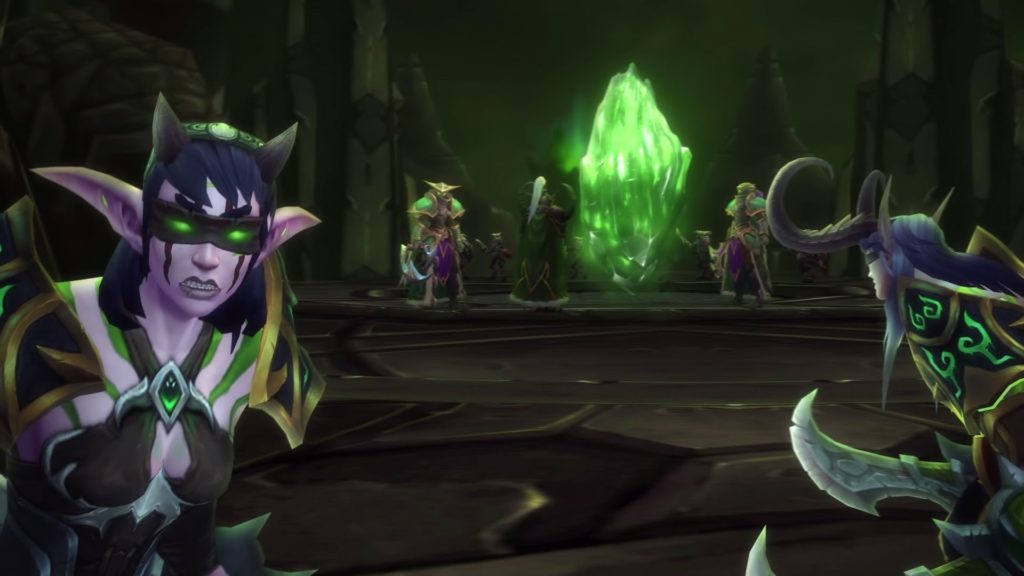
I gotta say, despite the glaring edginess attached to them (I mean just look at them), Demon Hunters are quite Fun™ to play as, specially their tank specialization, their introductory storyline retroactively ties with the events of The Burning Crusade expansion. (Spoilers: if you raided Black Temple and killed Illidan this is all your fault).
This is Blizzard’s take on modern class design, and they did a good job at it in my opinion. It’s a class that’s easy to learn and get into, with only two specs (DPS and Tank) to manage instead of the traditional three, they have superb mobility, double jumping, and a built in glide, which all adds a bit of modern “action” flavor to their design while keeping it down to the fact that WoW is not one of those “Action combat” type of MMOs.
My only gripe is that it is perhaps too easy and simplistic of a class, so their core gameplay can often be mind-numbing boring (at the end of Legion the most optimal DPS spec basically involved pressing three buttons besides cooldowns here and there).
Leveling & Zone Design
This is one aspect of the game where I personally believe Blizzard has done a good job refining over the years; they’ve certainly come a long way since Vanilla & Burning Crusade when it comes to leveling and the flow of questing.
Instead of the traditional linear leveling, all zones scaled with you; this “build your own adventure” approach was interesting whilst relative to the context of the first act of Legion’s storyline. I felt like each zone’s quest storylines flowed smoothly, each zone’s ultimate goal was securing one of the Pillars of Creation, with several side quest lines along the way.
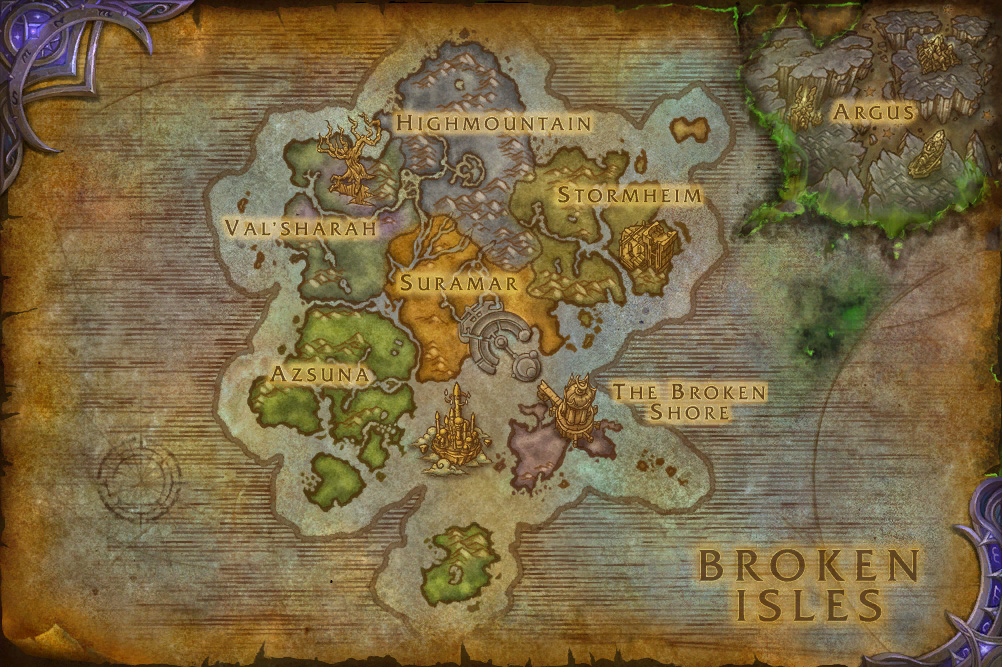
If I had to pick a favorite zone from the Broken Isles I’d say it was Stormheim, comfy music, Norse inspired, basically Borean Tundra 2.0, can’t go wrong with that.
As for a least favorite one, I’d say it was Highmountain without a doubt. I don’t know why—no particular reason really, beautiful zone, I just had a difficult time navigating through it before flying was unlocked (and even with it unlocked the damned Hunter Order Hall no-fly zone was always in the way). I get it, mountains and all, but even its questline was monotonous and uninteresting for me, I had a hard time trying to give a damn about it.
On the other hand, Suramar city felt heavily underused in my opinion, Blizzard crafted this entire hostile and beautiful city stuck in a perpetual sunset, the last jewel of the Night Elves’ golden age before the Sundering, full of nice little details at every corner that are a delight to avid explorers and yet there was not much to do on it besides the main questline.
But hey, we got this fantastic remix to always remember the best parts of it.
The Broken Shore, first explored right at the start of Legion, and then fleshed out through a patch 7.2 was just the same old green and bleak rocky Burning Legion aesthetic, nothing that hadn’t been seen before.
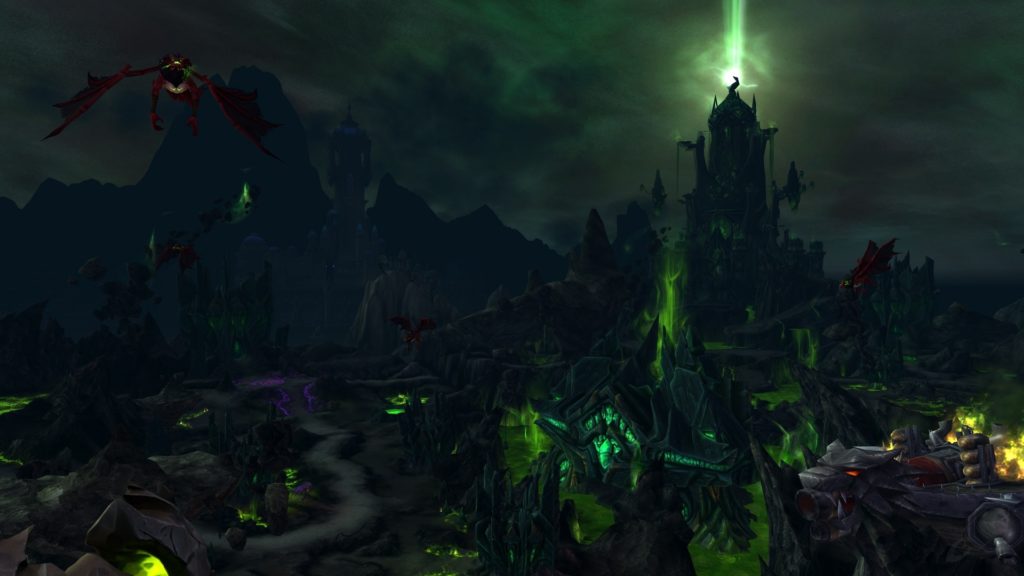
Then along came Argus, the ultimate green Fel and barren rocky planet, which surprisingly was quite nicely designed. Out of the three small explorable zones of Argus only the Antoran Wastes was the one that was entirely plastered in green.
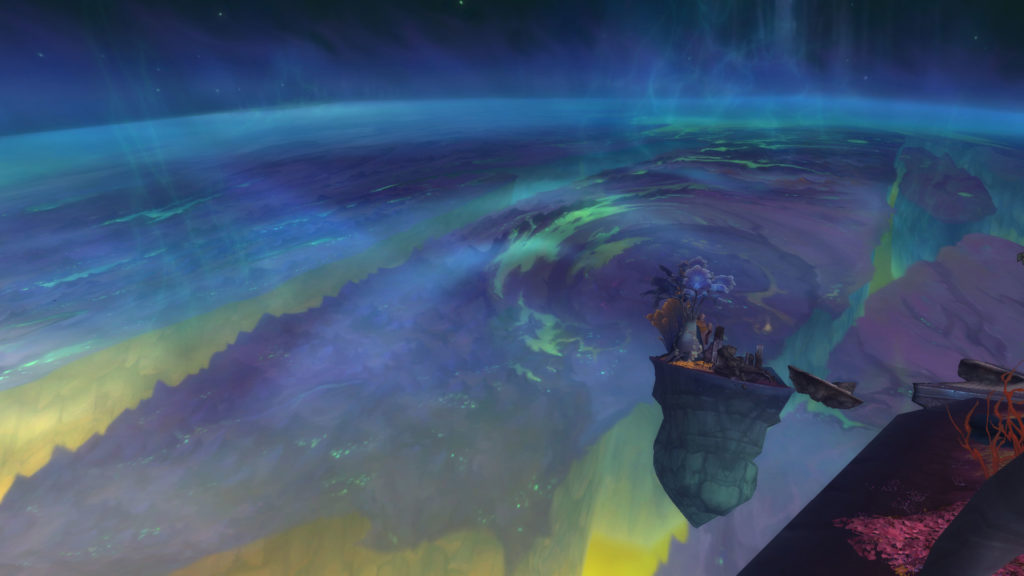
Mac’aree (or what’s left of it) was the last shard of what was once a beautiful planet before the Legion turned it into their main base of operations. I would’ve loved to see more of the Draenei’s former capital—I’ve always been sucker for ruins of once great cities/civilizations, but we only got a dislodged bite size, everything else was just part of the skybox.
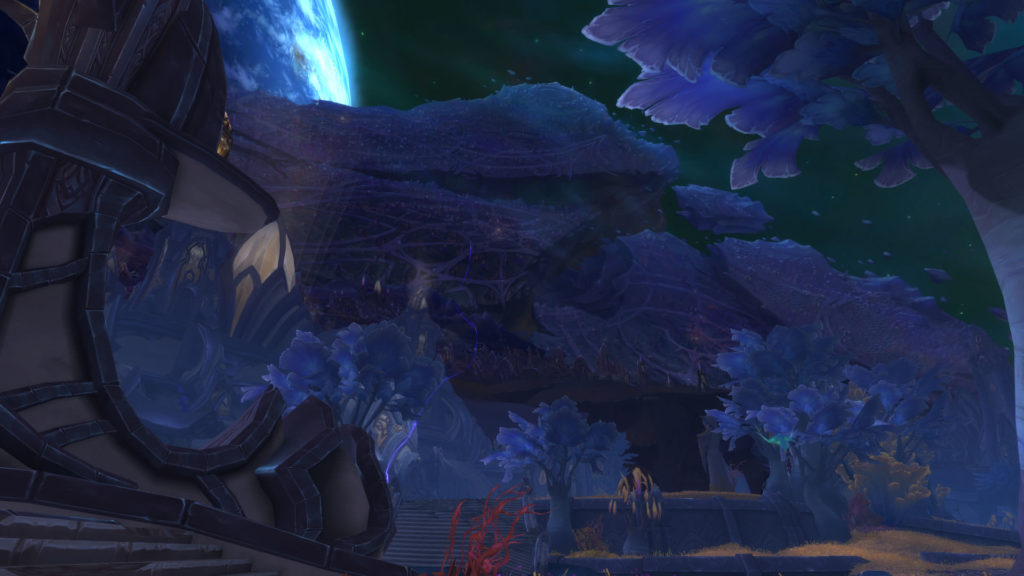
I would’ve been great to see more of Argus but this is Blizzard we’re talking about, the fact that they added these three zones (which add up to a big one) is a miracle itself, considering one entire broken isles zone was scrapped altogether, what we got in return made up for it.
Besides, making a more explorable Argus would’ve meant yet another Legion expansion, so I guess this condensed version of it worked out in the end.
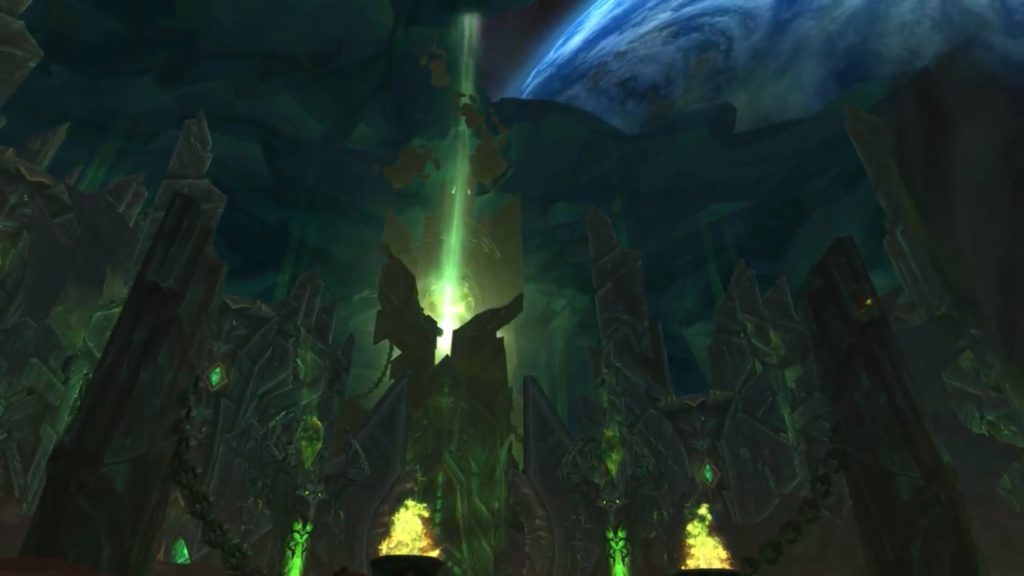
Order Halls
Lauded as a crucial feature of the expansion, order halls were just Garrisons 2.0.
Sure, each class had a brief storyline attached to their respective order halls that involved tackling the Legion problem in their own way, but once you were done with it you’d only return to manage your NPC quests (which you could just do on your smartphone anyways), power up your artifact weapons, and open your weekly Mythic plus chests.
Structurally, the core of each Order Hall’s storyline was the same, they all involved recruiting renowned NPCs to your cause, sending them on missions for resources, and ending up in a scenario.
At least you didn’t felt alone like in WoD’s Garrisons, you shared your hall with other players of your class regardless of faction.
Dungeons & Mythic+
Dungeon design in Legion was pretty spot on, adding a couple extra as the expansion progressed was a nice touch for those that prefer 5-man content over raiding; Halls of Valor strikes me as one of the most unique dungeons from a visual point of view.
The problem with dungeons in the past is that once you were done collecting gear from them at the start of the expansion you had no reason to return, Warlords of Draenor had some fantastic dungeons that rapidly got deserted due to the irrelevance of the gear they dropped.
Then along came Mythic Plus. Taking a page from Diablo 3’s greater rifts, it is perhaps, the best way to keep dungeons relevant through the entirely of the expansion whilst offering players with an infinitely scaling challenge, a quasi-parallel gearing path with raid gear, and a rotating weekly set of extra obstacles that put extra pressure on your group.
Selling Mythic plus carries is sadly, more profitable than being a high ranking professional in Venezuela.
Return to Karazhan, the fan favorite raid returned as a “Mega Dungeon”, I love it for more than the nostalgic value (the original Karazhan holds some of my fondest WoW memories), almost as large as the original made for one hell of a dungeon delving session, but I can see why they would later on decide to split it in two halves once its Heroic and Mythic plus versions were added.
Raids
Warlords of Draenor sure disappointed when it came to raid content, with only three of them across two tiers; Blizzard didn’t repeat the same mistake and packed in the usual three-tier raid content approach.
The Emerald Nightmare
At last, after years of speculation and anticipation, we got to see the Emerald Nightmare—only for it to be portrayed through a series of rooms that are warped versions of existing locations. This introductory raid was alright in terms of boss fights, but it was too simple and brief.
It will also make you hate Malfurion Stormrage, because despite him being “The most powerful Furry–I mean, Druid in Azeroth” all he does is whine through the whole raid, this is why burning is the only solution for the Night Elves.
As for its final boss, Xavius, it had an interesting corruption/dream mechanic attached to it that you could exploit bigtime with Shadow Priest’s Surrender to Madness ability (before it got gutted bigtime), the room was as plain as it gets, it was just a gray foggy room, the only detail was the room’s ceiling that you wouldn’t be staring at in combat anyways.
After you beat him you finally get to see the Emerald Dream, something people have been longing to do since they glitched their way through unfinished maps in Vanilla WoW—well not quite, just one room with an easy to miss foreshadowing unless you were a Shadow Priest.
Ultimately, the Emerald Dream/Nightmare ended up being underused as a intro raid, lame.
Trial of Valor
This one was just a filler raid, that was pretty much all about it; reused areas and bosses, forgettable overall, and largely inconsequential to the overall Legion storyline; this is easily one of the weakest raids design-wise in WoW history aside from its unique raid armors and “The Chosen” challenge.
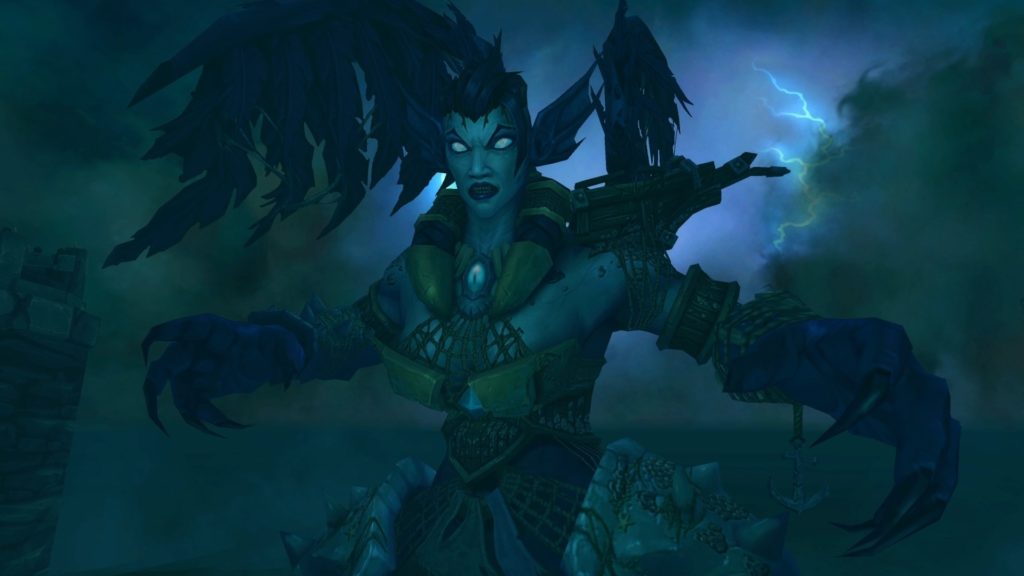
The Nighthold
The first actual full fledged raid in Legion—the culmination of both the Suramar storyline and the expansion’s first act.
I certainly enjoyed this one, the reused music was one of its weakest points though, but the boss fights were enjoyable.
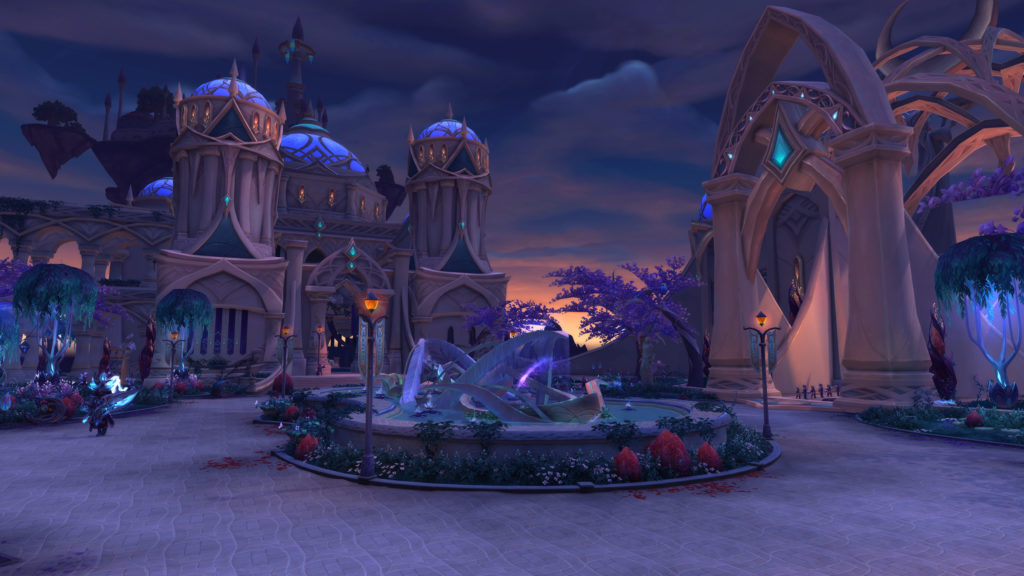
Elisande and her “It’s time travel, I ain’t gotta explain shit.” mechanics is among my favorite boss fights in modern WoW.
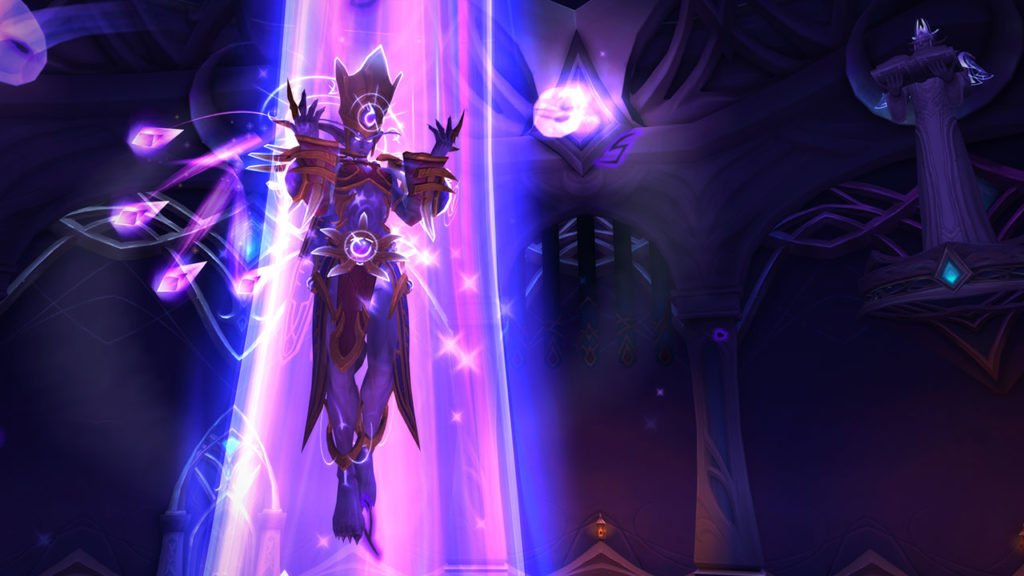
Gul’Dan was a great final boss fight for the Nighthold, and a very long one to boot. The Mythic-only phase was basically a homage to the Black Temple (the heyday of my WoW career), which was a nice touch, plus you get the ultimate edgy “Vengeance Incarnate” title to your character.
Tomb of Sargeras
Now here’s where things got tedious.
ToS was, in my opinion, just too annoying of a place; design wise it was beautiful tained temple of a bygone age. If you played Warcraft III you’ll recognize the name, there’s even an easter egg for funsies.
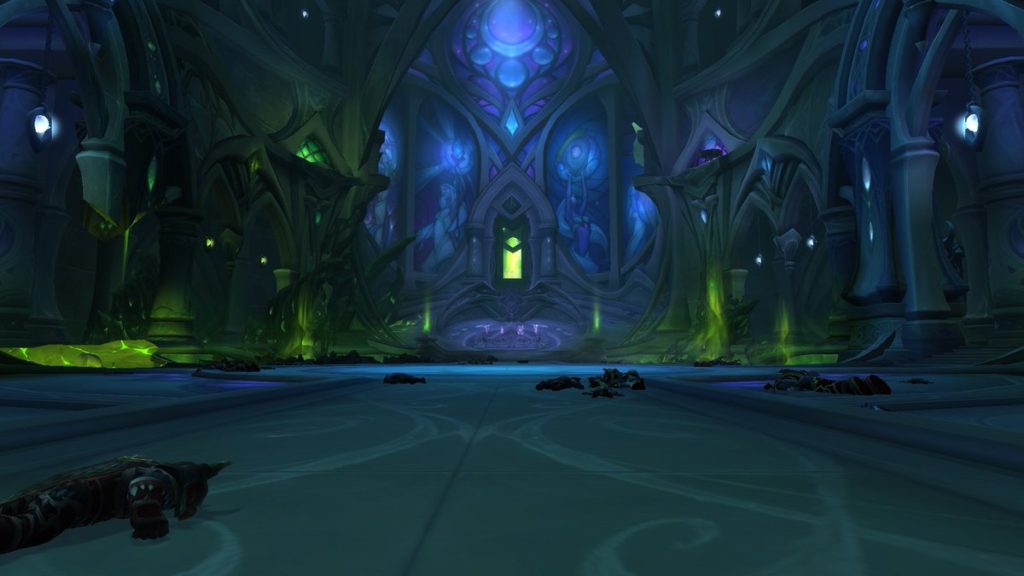
Everything else about the raid felt like a snore, you had some interesting fights but most of them felt like a complete chore; soak this, soak that, and once you’re done soaking get ready to soak some more before you soak that other thing.
You spend 10+ years telling your DPS not to stand in shit (they still do) and here comes these boss encounters were you have to stand in shit—then they don’t actually do it and you wipe over and over and over again.
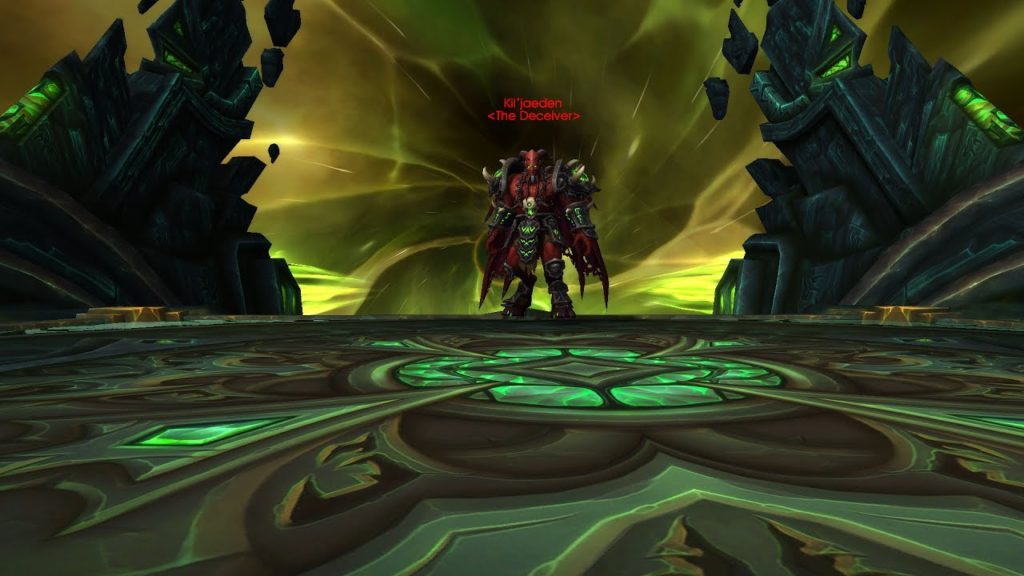
Kil’Jaeden was the worst case of it because you needed particular classes with access to immunities in order to clear the “standing on shit” part. This franchise began with orcs versus humans, and here you are fighting a red dude (for the second time in WoW, for those that don’t know, you flush him out of a golden toilet the first time back in 2008) on top of a spaceship that’s traveling at warp speed.
This raid seriously burned me out so fast that I took a very long break from the game after I killed KJ in Heroic difficulty once, that’s how tedious it was for me.
More like Tomb of Soakgeras lmao.
Antorus, the Burning Throne
The Crown Jewel of Legion Raids, the Headquarters of the Burning Legion itself.
Unlike the excruciating Tomb of Sargeras raid, Antorus was quite enjoyable and didn’t felt like a complete and utter chore; boss encounters were fun, although Eonar was a special case—Blizzard had the brilliant idea of making a tower defense based boss encounter (they’ve been doing this “let’s throw an irregular boss encounter in the last raid tier of an expansion” thing for some time now), but the rest of the fights were pretty spot on, I actually enjoyed farming these bosses, for real.
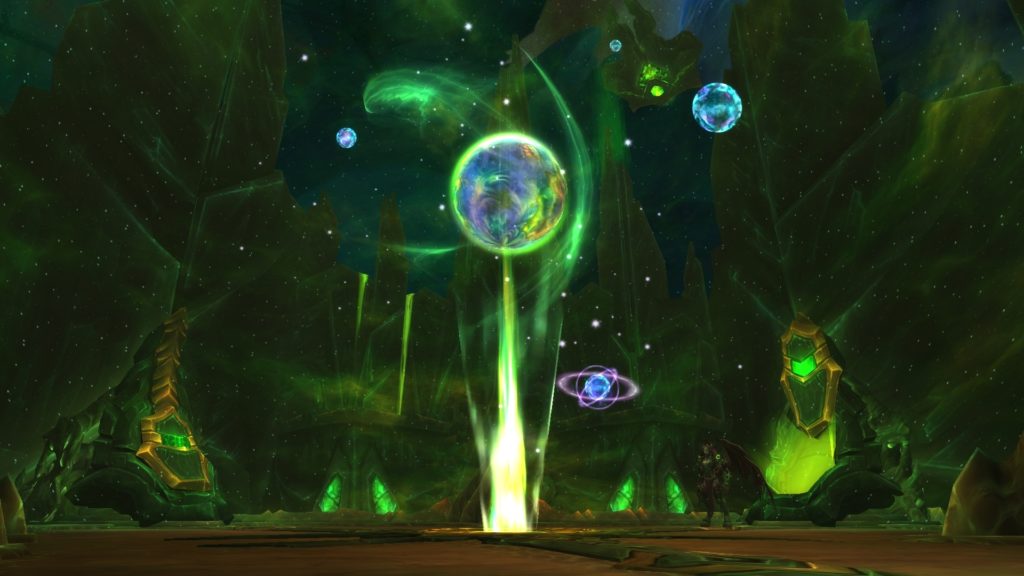
The goal was to shut down key Burning Legion systems, from their commanders to the portal network, even their siege engineer, you continued your descend until you rescued the Titans themselves from their torment and then get beamed up for the final fight.
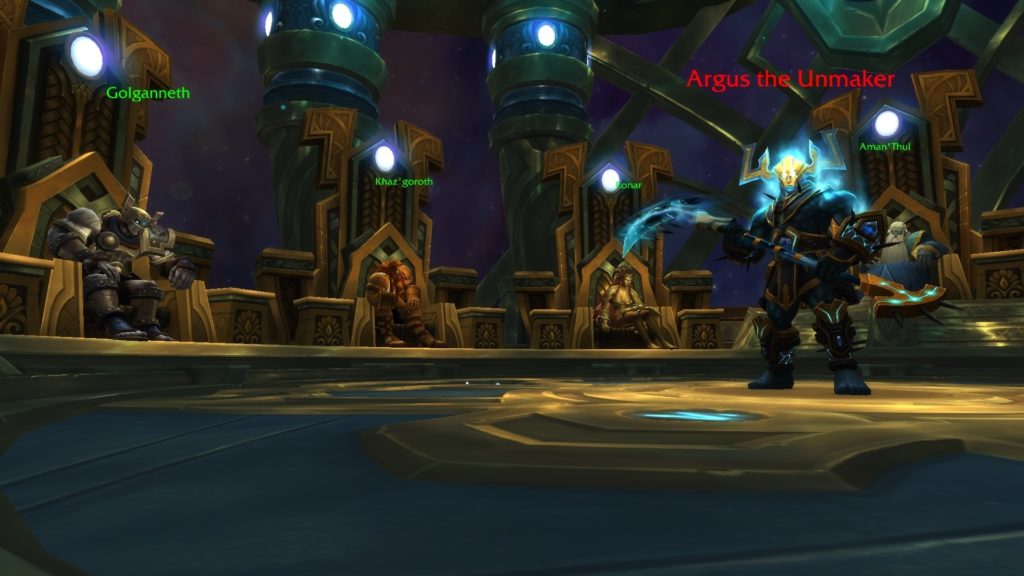
Argus the Unmaker was a great final boss for the expansion, the fact that the final boss is a Titan itself that gets defeated through an “unwinnable” fight as the weakened and battered Pantheon aids you with the very last of the power (cheating death in the process) made up for a thrilling encounter.
You weren’t supposed to win against him, you’re just a bunch of mere mortals, and yet despite all odds you managed to do the impossible, sealing Sargeras in the process, that red shine in the sky now servers as a testament of your victory against the Legion.
Even the final boss theme (Seat of the Pantheon) was superb, especially when you realize that a section of it is a rearrangement of a 2008 Titan related track from Wrath of the Lich King (Forged in Blood), a nice touch that ties the Titans themes in content that was released a decade apart.
This was the only raid tier in Legion that I played on Mythic difficulty, and I had a blast through it, I missed tackling hard content.
Legendaries, Titanforging, and the RNG
This is where the Diablo 3 design influences become more evident, just like in D3 these were powerful items that you’d wear through the entirely of the expansion that often changed the way your favorite spec played—some of which were instrumental to the optimal performance of your class, if you managed to get lucky enough to obtain the correct ones asap that is.
The legendary system was nice in paper, but inherently flawed in execution; just like with Diablo 3, the main problem with them is the complete randomized way that you obtained them.
When you finally had one drop you you would either cheer to the top of your lungs and go “FUCK YEAH!”, or yell “FUCK NO!” and feel frustrated because you got a really bad one, most of the time it was the latter.
The performance of many of the classes was balanced around these items, and when you have no control as to which and when you’d obtained them just added a completely random handicap to players, the illusion of choice once again does its trickery on you because despite having all those Legendary items to choose from you will always use the most effective pair, simple as that.
Titanforging
Warforge/Titanforge killed the linear progression of gearing through content.
Unlike in times past where you’d gear with items from X place in order to be able to defeat a boss that drops gear that would let you tackle a stronger challenge you now had scenarios of people decked in 970+ gear killing a boss that drops 940 gear.
Being decked in titanforged gear and finally killing that boss that has been a thorn in your guild’s path only for it to drop gear that is lesser in power than what you already had or killing a boss in an easier difficulty and suddenly getting a version of an item that’s way stronger than your harder difficulty counterpart diminished the effort/reward relation; raid bosses were balanced around this completely random increase in power as well.
Then again, that’s how things are with WoW gear now, gotta suck it up and deal with it, I ultimately don’t have problems with sudden lucky drops of titanforged items, but the whole system was just too random for my likings.
World Quests
Diablo 3’s Adventure Mode Bounties: WoW edition.
Doing away with traditional daily quests in favor of the Diablo 3 model did shed off some of the monotony of the daily quest grindage, the problem is that you felt obligated to do them because you had a very small (but realistic enough to bother with it) chance of obtaining legendary items through the cache rewards every day.
Also if I fucking hear GREYMANE’S FORCES HOLD THIS WARDEN TOWER BREAK THEIR RANKS SHOW NO MERCY one more time I’m gonna snap.
Music
Legion’s music was what you’d expect from World of Warcraft, it’s there to set the zone’s mood rather than be a protagonist element of the fight like in Final Fantasy XIV.
With the introduction of Argus and Antorus in patch 7.3 music took a more frontal seat, Argus the Unmaker’s boss theme felt like a part of the fight rather than just the background audio (which you’ll end up muting anyways in order to hear your guild’s voice chat, but still).
Wrapping up
To wrap this up, Legion was an enjoyable ride, WoW is one of the very few respites that I have in this troublesome times that I live through, something I get to enjoy with friends. It sure wasn’t WoW’s “return to form” as some people hyped it up to be, but it was as close as it could be when you consider the difference between the original iteration of WoW and the modern one; it had more steps forward than backwards but some of those negative steps could’ve been easily avoided. Story wise it closed up the threat of Burning Legion, a chapter opened in Warcraft III, I suppose only the Void/Old Gods remain as the biggest threat to Azeroth now (besides its own denizens).
The Diablo 3 design influences were more than evident in world quests, the “endless” paragon-esque final artifact trait grinds, mythic plus, the randomization of loot drops with Warforges/Titanforges.
Legion suffered through a severe power creep, a fresh 110 character would have 1.6 million health points, my Paladin ended up with approximately 9.8 million health point; DPS went from ~200k damage per second in the early raids to millions at the end of the expansion, numbers quickly went out of hand in just one expansion.
The stat squish introduced in Warlords of Draenor didn’t lasted much, I guess they’re taking the Venezuelan approach of just axing zeroes with the new one done for Battle for Azeroth.
As for the future of WoW, Battle for Azeroth is shrouded in controversy, from its rather weak plot so far, to even more questionable gameplay changes, whether or not it’ll all pay off for the best remains to be seen; WoW is still a game that’s not very enjoyable if you play it alone, but you can have one hell of a good time with friends, that’s just how MMOs work.
I guess I’ll give it a shot and check it out even though I don’t have that much of a motivation for World of Warcraft anymore, it’s not like I can take this old computer with me when I’m finally able to escape from this glorious socialist utopia anyways, but hey, gotta use that WoW gold for something in the meantime, right?
-Kal
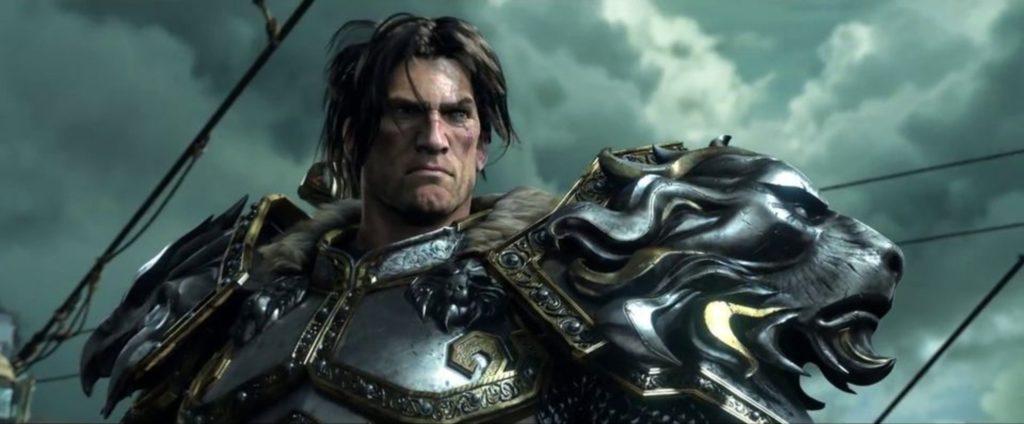
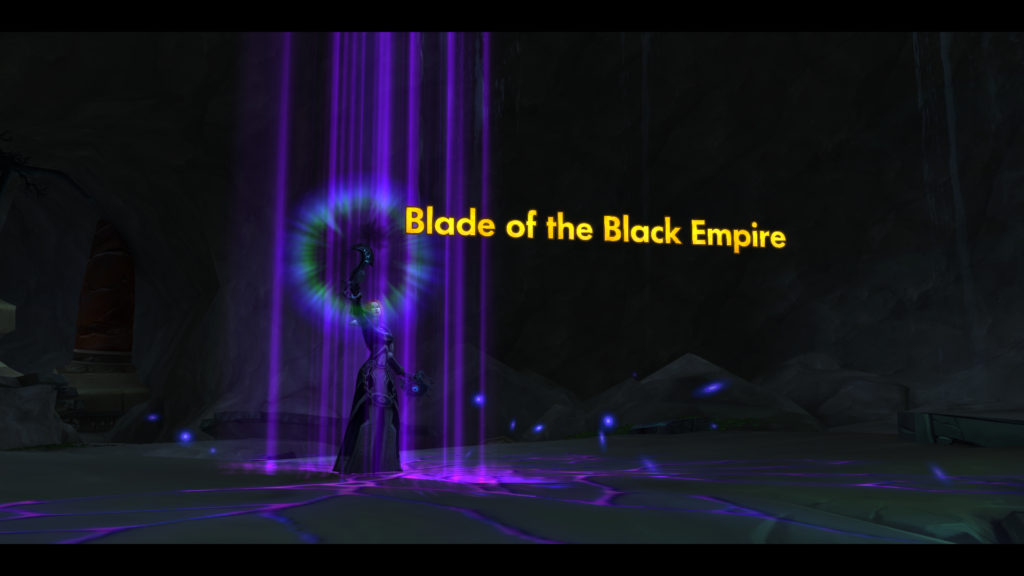
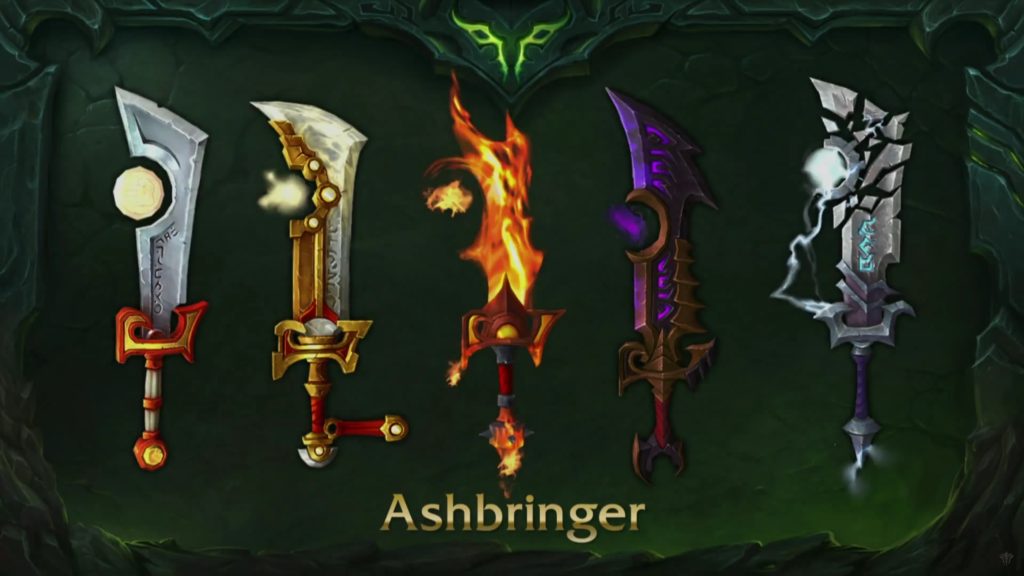
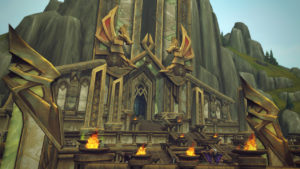

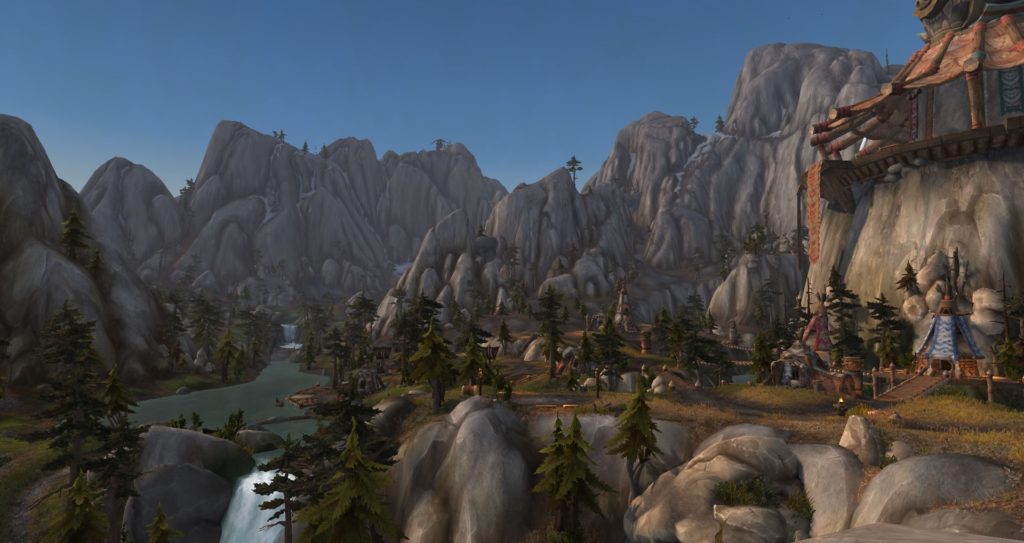
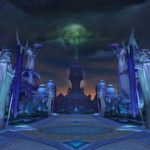

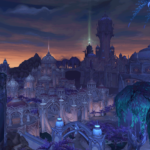
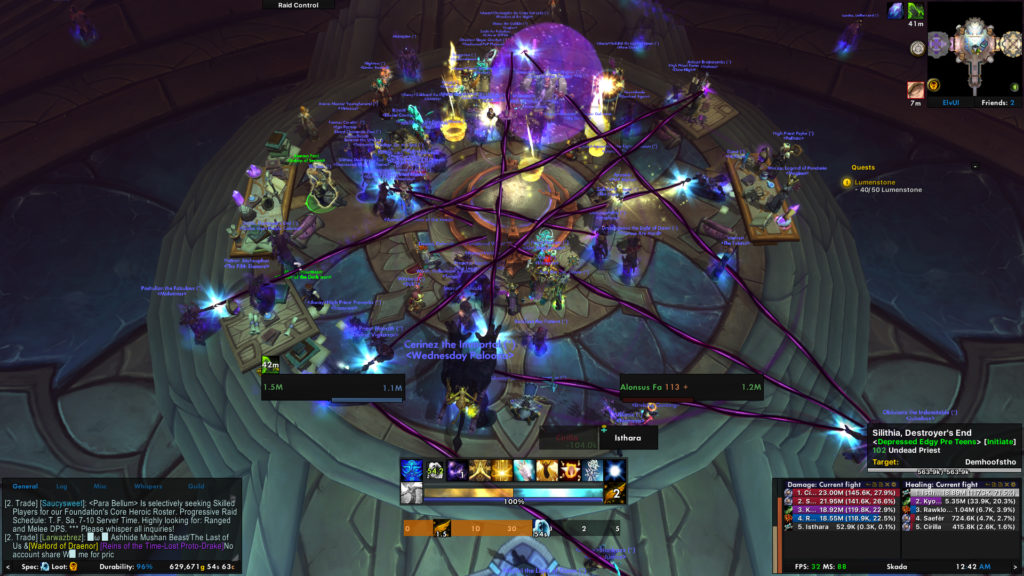
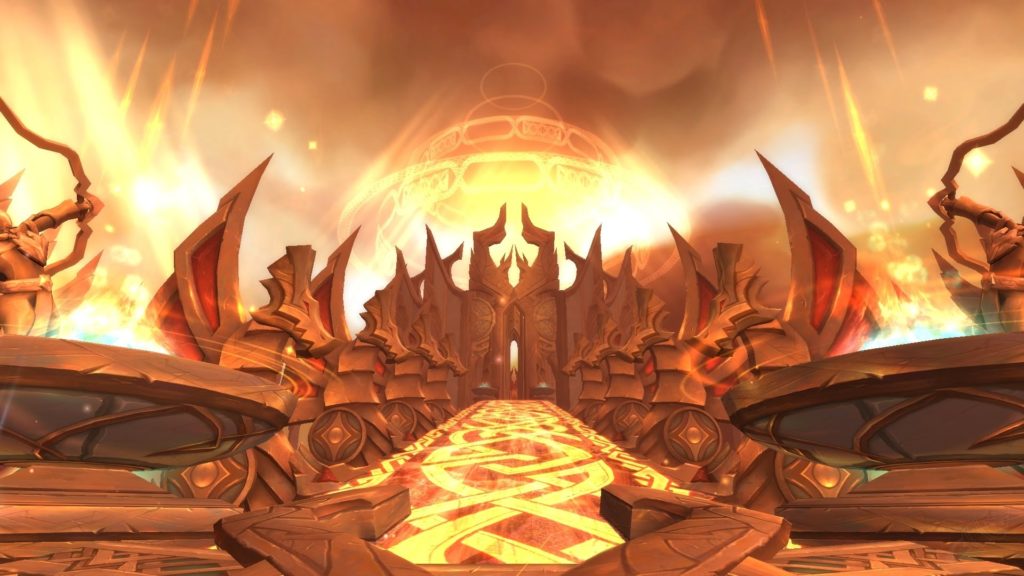
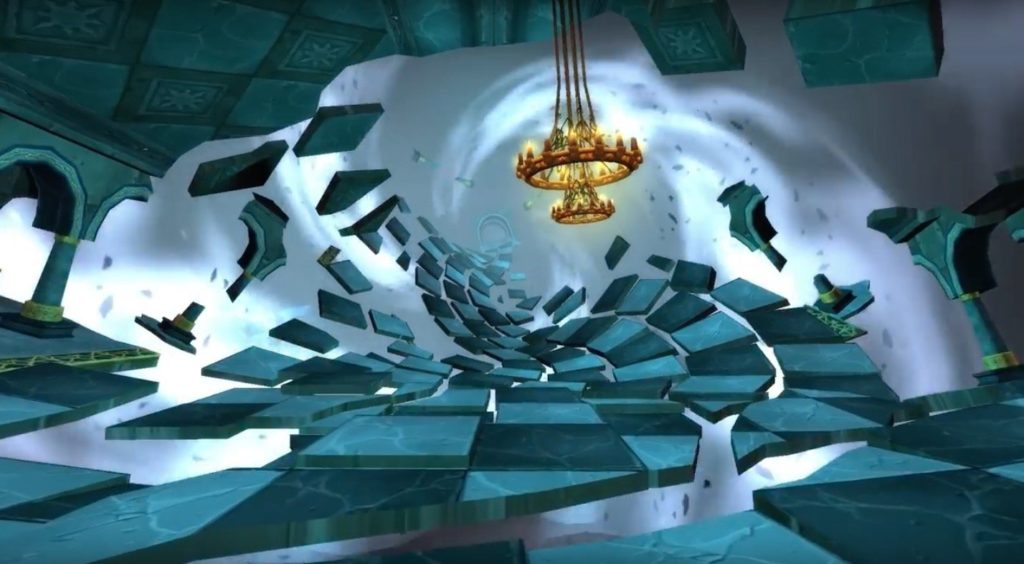
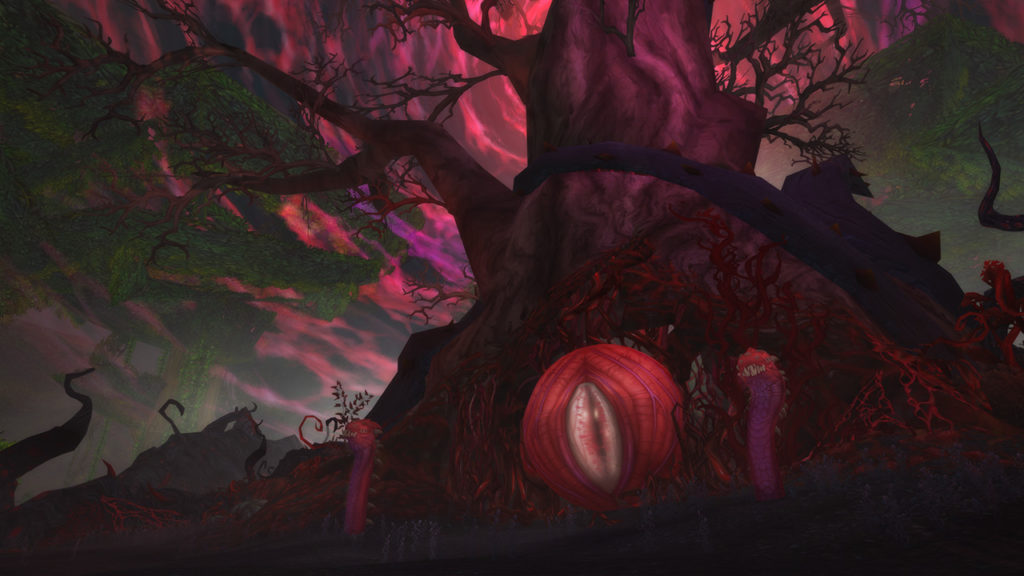
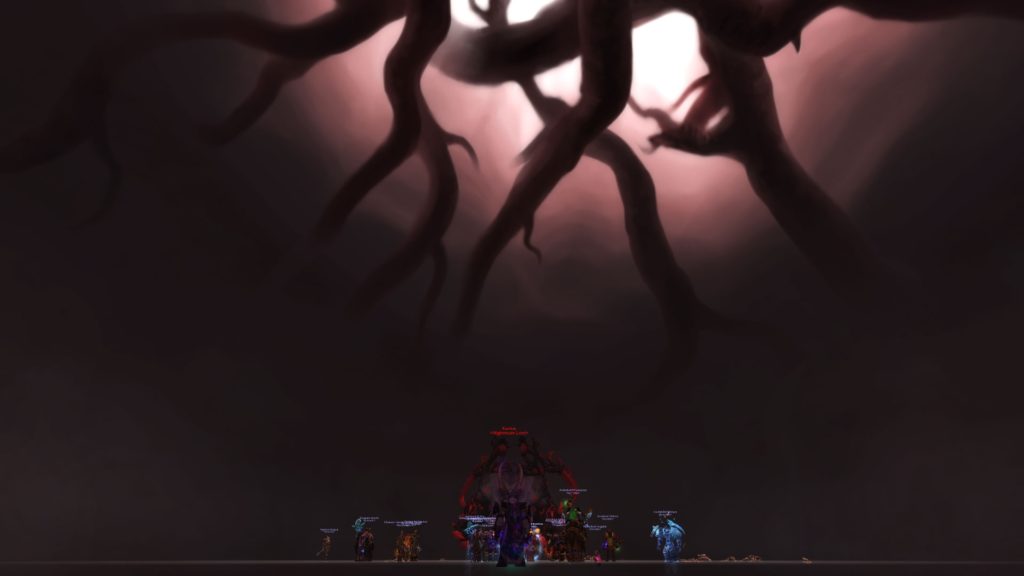
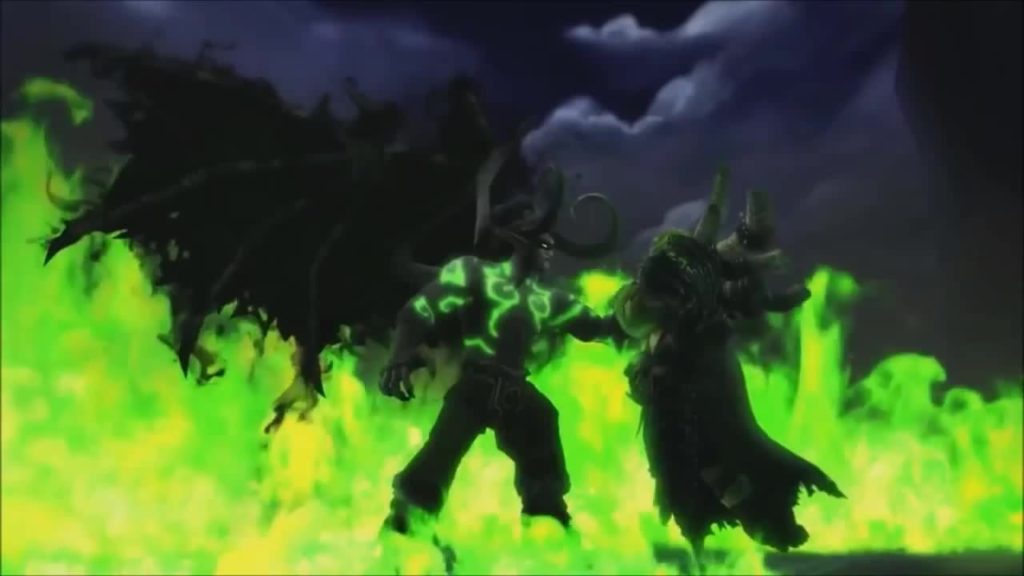

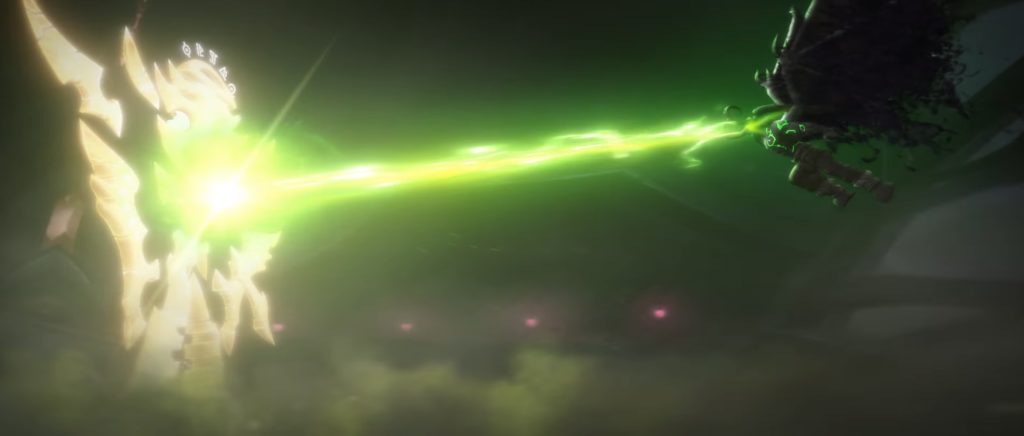
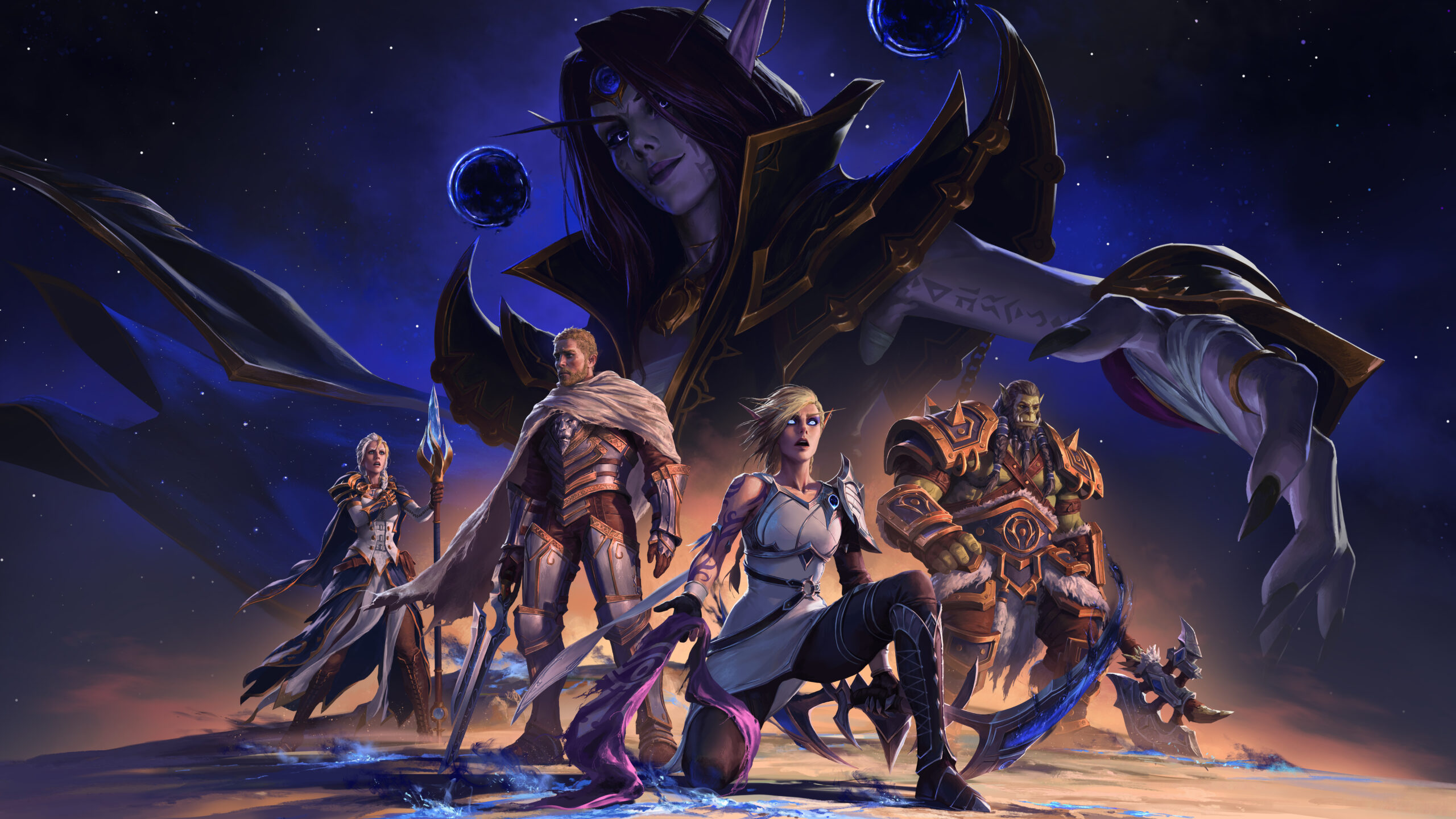

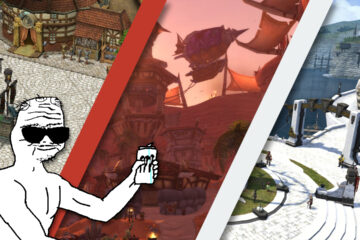
1 Comment
World of Warcraft: Battle for Azeroth wrap up | ckaleb[dot]com · February 17, 2020 at 4:39 pm
[…] I said in my Legion wrap up back in 2018: “Battle for Azeroth is shrouded in controversy, from its rather weak […]
Comments are closed.